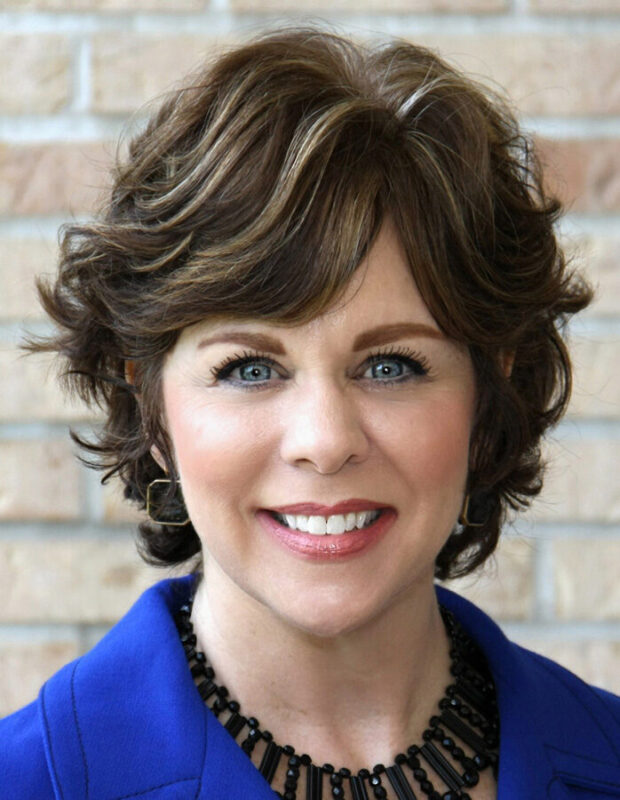Collaborated on by Jane Gentry, Jennifer McKenna, Jessica Bowers, and Josh McAfee
 Since World War II, women have been actively contributing to the workplace. So why don’t we see more women in executive roles over seven decades later?
Since World War II, women have been actively contributing to the workplace. So why don’t we see more women in executive roles over seven decades later?
After meeting scores of people, both candidates working on their career and business leaders growing their companies, Josh McAfee, Co-Founder and Managing Partner of Humans Doing, had taken notice. He knew he wasn’t going to be the best one to solve this issue and tagged in strong women executives and business leaders to help him better understand what was going on, how women can overcome this trend, and what CEOs could learn from it.
Jane Gentry, Principal at Jane Gentry & Company, Jennifer McKenna, Founder and CEO at JMac Consulting, and Jessica Bowers, The Noodle in Charge at Marketing Noodle and Director of Sales and Marketing for Catalytic Coaching Inc, discussed insights that can help women not only build stronger careers, but develop the executive presence that will catapult them into higher levels of success.
WHY AREN’T WOMEN GETTING THE RECOGNITION THEY DESERVE?
 Both Jennifer and Jane point to the piles of research indicating that women and men are both basically equally competent in their skills and abilities. Even in areas that are traditionally biased toward men, like finance and strategy, their capabilities are neck and neck.
Both Jennifer and Jane point to the piles of research indicating that women and men are both basically equally competent in their skills and abilities. Even in areas that are traditionally biased toward men, like finance and strategy, their capabilities are neck and neck.
So why do men seem to get more recognition (and promotions) than women?
Jane points to three primary interrelated reasons why there are fewer women the further up the corporate ladder:
- Risk Tolerance. Studies show that in business, women don’t have as high of a risk tolerance as men. While they may talk to their boss about a promotion, they often won’t ASK for one directly or what they need to do to get one. They’re uncomfortable with self-promotion, fearing it’ll be detrimental to their career. Women also aren’t as likely to take on positions they don’t feel 110% qualified for. For example, if a job requires 10 competencies, a man will have four and say “I’ll figure the rest out late,” but a woman won’t be comfortable unless she has eight or more of those boxes checked.
- Lack of Confidence. Men tend to be more confident with the unknown and new challenges where women can tend to be more conservative in their estimation of their skills and abilities. Referring to the Dunning-Kruger effect studies of the 1990s, Jennifer points out that confidence can be misleading. These studies showed that most people are more confident than competent. While that particular study didn’t include sex or gender as an indicator, later research showed that men tended to exude that higher confidence. Men and women communicate their confidence differently and those confidence cues are misleading when it comes to actual competence and abilities.
- Types of Positions. Research shows that women tend to gravitate toward staff roles more often. Men actively go for jobs that have higher risk rewards, directly run or have responsibilities to the business and grow the bottom line. Those happen to be the kind of roles that provide more opportunity for promotions and recognition. Think about the C-Suite. There’s usually one HR position at that level, but a pile of Senior Vice Presidents sitting at the table. Guess which one is typically filled by women.
THE ROLE OF NURTURE VS NATURE
 Even today, most women are societally trained to be more demure and less aggressive, which ultimately leads to them fading into the background in a noisy workplace, as Jessica pointed out. Resigning themselves with what’s comfortable and not meeting their potential is something Jennifer and Jane have both seen women do throughout their own careers and within their coaching practices.
Even today, most women are societally trained to be more demure and less aggressive, which ultimately leads to them fading into the background in a noisy workplace, as Jessica pointed out. Resigning themselves with what’s comfortable and not meeting their potential is something Jennifer and Jane have both seen women do throughout their own careers and within their coaching practices.
Women have both nurture and nature against them. Our mothers and grandmothers were among the first full-time working generations of women. With that came the rise of the microwave and the decline of the garden. Back then, as today, these women would still put their families before their own professional potential. Our role models have been maternal martyrs, deferring to men and settling for less professionally. We’re still in an adjustment period. There hasn’t been much time for role models to overcome, develop, and lead the way.
Making it into the C-suite has often required women to take on “masculine traits.” Not only has that been ridiculed and looked down on by society at large, but many women see that as giving up on having a traditional family. They don’t want to feel the embarrassment or shame of not being a “real woman.” The work environment hasn’t been accommodating to mothers that also wanted to be business leaders.
WHAT CAN WOMEN DO TO BREAK THE GLASS CEILING?
- Watch your language. Women tend to use phrases like “I feel…” or “I think…” This permission based verbiage puts them at a disadvantage when discussing options for salary increases or promotions. Come with data instead. For example, when approaching conversations about pay, be able to present what you’ve done for the organization and what the current market is offering. Jane recommends grabbing a copy of Financial Intelligence by Joe Knight, John Case, and Karen Berman
- Get mad! As Josh pointed out, when a woman gets angry, nothing can stop her. Sure, men can get things done when they’re mad, but they don’t accomplish them very well. Women will move mountains when they get fed up and stop holding themselves back. There is a balance, of course. Stay mindful that anger isn’t toxic and destructive. Focus it on solving problems, not blaming or shaming.
- Build Intentional Networks. These should be people that are driven, successful, and already have the traits or positions you’re aiming for. Jane recommends these networks be formed outside your company. You may have to seek out the circles you want to be in. For example, you won’t find many CEOs at networking events. If that’s the level you want to connect with, you’ll find them on boards or donating time to nonprofits. Even if your credentials aren’t going to get you onto a board just yet, you can volunteer time in these spaces to meet the right people.
- Position Yourself for Success. As Josh points out in his book, Measure Up: Mastering Your Career Like a Boss, you have to know what your strongest points are and where you’re most valuable. Develop statements around that to steer conversations toward what you bring to the table.
- Envision Success. As part of the JMac method that Jennifer developed, she gives all her coaching clients vision homework. The science says your brain doesn’t register much of a difference between imagination and reality. What you envision has a direct effect on your system, either charging you up or depleting you. Take quiet time every day to visualize what you want, what you have to do to get it, and projecting confidence.
- Invest in Yourself! When it comes to executive coaching, women need it most; but it’s almost always men that actually seek it out. Career prioritization is self care! Take the class, read the book, get a mentor! As Josh likes to say: you are a Ferrari, why are you only going 35mph?! Use the best fuel, the best tires, and give yourself the best advantages.
- Develop Self-Awareness. Be able to look at your resume, understand what you want from your career, and practice communicating that effectively with managers. Your boss is not in charge of your career. You are. Prove to yourself and everyone around you why you deserve that C-Suite chair.
- Don’t Think the Worst. Women can be hyper aware that they traditionally haven’t been taken as seriously, given opportunities they’ve earned, or have been objectified in the workplace. This has led to some extreme knee jerk reactions when interacting with men that has created additional conflict and barriers. Jennifer knows a man that was taken to HR simply because he told a co-worker her toe nail polish was a pretty color. Don’t shoot yourself in the toe nail polish. Pick your battles and stay focused on positive growth.
 Remember, it’s ok to toot your own horn and not apologize for being amazing. It’s ok to want a family AND a career. It’s more than ok to ASK for what you deserve.
Remember, it’s ok to toot your own horn and not apologize for being amazing. It’s ok to want a family AND a career. It’s more than ok to ASK for what you deserve.
Ask yourself: Is your career capitalizing on your potential? Or have you just settled?

Jane Gentry has had a successful 30-year career as a CEO, Business Consultant, Executive Coach, Sales Manager, and Keynoter. In 1999, Jane formed her practice where she has partnered with her clients to improve growth, profitability, client retention, employee retention and leadership capabilities.

Jennifer McKenna developed the JMac method 20 years ago to transform visions into reality, she is adept at extracting the Big Idea and breaking it down into measurable milestones. With a background in program and business development and change facilitation and consulting, Jennifer coaches leaders and guides the process of transformation. Jennifer has been featured on Fox Atlanta and CBS for her work as a coach.

Jessica Bowers is the Head Noodle in Charge at Marketing Noodle. Leveraging a degree in Sociology with a concentration in Organizational and Social Change, she's spent the last 12 years developing marketing and content for small businesses, engaging with the community to build up peers and future leaders, and teaching companies how to improve their company culture and employee experience.

Josh McAfee is the Co-Founder and Managing Partner at Humans Doing. With over 26 years of recruiting and team-building experience, Josh has worked with startups, SMBs, and large companies to determine hiring needs, develop our recruiting strategies and processes, and connect top talent to fuel growth. In 2021, he became a Wall Street Journal and USA Today bestselling author with his book Measure Up: Mastering Your Career Search Like a Boss.